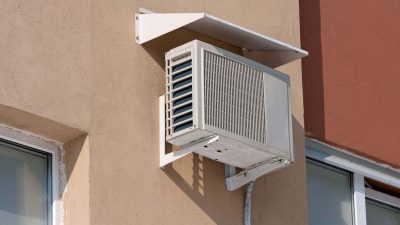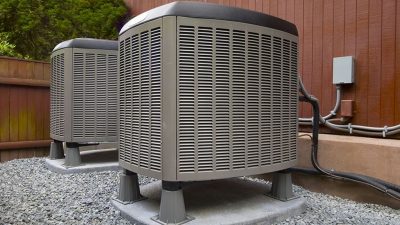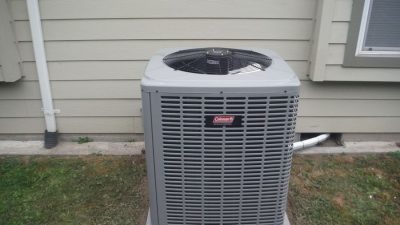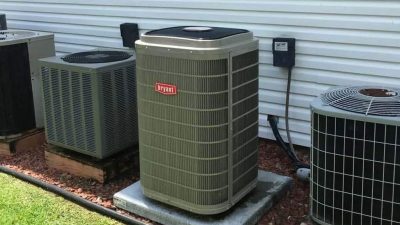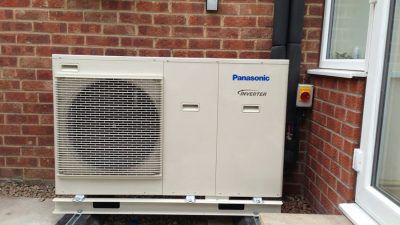Are you looking for a way to heat and cool your home without breaking the bank? Are you tired of your energy bills taking up more than their fair share of your budget? Then, a mini-split heat pump might be just what you need. This energy efficient solution is quickly becoming one of the most popular choices for homeowners looking for an affordable way to keep their homes comfortable all year long.
In this article, we’ll take an in-depth look at mini-split heat pumps and explain why they’re such an attractive option. We’ll discuss how they work, where they can be installed, and compare them to other heating and cooling systems. You’ll also learn about the potential savings that come with using a mini-split system over traditional HVAC systems. In short, by the end of this article you’ll know whether or not a mini-split heat pump is right for you!
So if you’re ready to gain freedom from high energy bills and get back control of your budget – then let’s dive into understanding exactly how these amazing little machines do it!
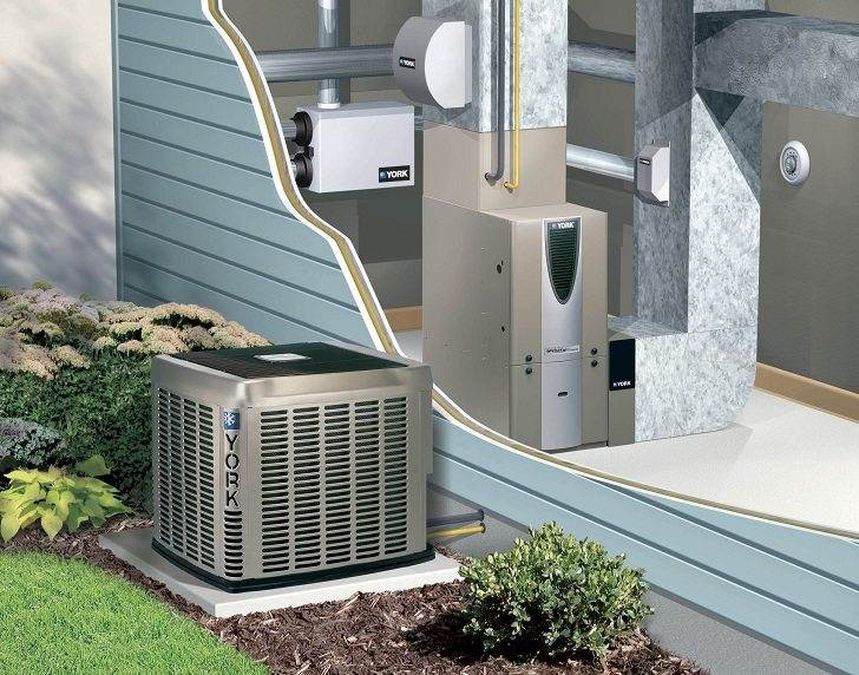
Overview Of Mini Split Heat Pumps
Mini split heat pumps are a great way to provide efficient and comfortable heating and cooling in your home. They offer customized temperature control, with each room having its own thermostat that allows you to adjust the temperature based on preference. This type of system is becoming increasingly popular due to its energy efficiency, ease of installation and convenience it provides. By understanding what mini split heat pumps are and how they work, homeowners can decide if this is an ideal solution for their needs.
The most basic overview of mini split heat pumps is that they consist of two main components: an indoor air handler unit and an outdoor compressor/condenser unit connected by refrigerant lines. The air handler draws in outside air which passes through a filter before entering the space; the compressor then compresses the refrigerant which sends hot or cold air into the living area depending on whether it’s summer or winter months. In addition, some systems also have extra features such as dehumidifiers or zone controls where different rooms can be set at different temperatures within one system.
Mini splits have many advantages when compared to traditional HVAC systems since no ductwork is required for installation making them more cost-effective than central AC units. Additionally, because each room has its own thermostat, there’s less wasted energy from unused areas like hallways or stairwells often found in other types of systems. Plus, these systems come with quiet operation so you don’t have to worry about loud noises interrupting your daily activities. All these benefits make mini split heat pump systems an attractive option for anyone looking for efficient climate control without breaking the bank or sacrificing comfort.
Advantages Of Mini Split Heat Pump Systems
Mini split heat pump systems offer a range of advantages that make them a great choice for many homeowners. One of the biggest benefits is their energy efficiency, as they can reduce your overall electricity costs and provide you with excellent temperature control. They also have reduced noise levels compared to traditional heating and cooling units, meaning you’ll be able to enjoy greater comfort without having to worry about loud noises. Furthermore, mini split heat pumps are environmentally friendly due to their low emissions output, making them an ideal choice if you’re looking for ways to reduce your carbon footprint. Finally, there are cost savings benefits associated with using this type of system; since less energy is being used, it will save money in the long run by providing efficient heating and cooling solutions at lower prices than other options. All in all, investing in a mini split heat pump system offers numerous advantages that make it worth considering for any homeowner who wants more energy efficiency and cost savings.
Components Of A Mini Split Heat Pump System
A mini split heat pump system is composed of several components: the compressor unit, air handler unit and condenser unit. The compressor, also known as a ‘pump’, circulates refrigerant through the system to either cool or warm the air inside your home. It’s typically located outside in an outdoor cabinet, shielded from direct sunlight by a cover. The air handler contains multiple coils that are used for cooling or heating depending on the season; it’s usually located indoors near a wall mounted thermostat. Finally, there’s the condenser which helps expel hot air out of your home during warmer months and keeps cold air in during colder seasons. This component sits next to the outdoor cabinet where the compressor is housed.
These three components combined make up a complete mini split heat pump system that can provide effective temperature control year-round while helping you save money on energy bills compared to traditional HVAC systems. Plus, with no ductwork required these systems are incredibly easy to install and maintain – making them ideal if you’re looking for convenience without sacrificing performance!
How Does A Mini Split Heat Pump Work?
A mini split heat pump operates on a simple principle of transferring heat from one area to another. This is accomplished through the use of an indoor and outdoor unit connected by pipes and wires. The outside unit contains a compressor, condenser coils, and an expansion valve while the indoor unit houses the evaporator coil, fan, and air filter.
The mechanism behind how a mini split heat pump works starts with refrigerant gas circulating between these two units. As it passes through the compressor in the outdoor unit, pressure increases which heats up the refrigerant gas before sending it into the indoor unit’s evaporator coil where it cools down as it releases its heat energy into your home or business space. At this point, low-pressure cold refrigerant then returns back to the outdoor unit to start all over again!
By utilizing this technology, you can achieve more efficient heating during colder months without relying solely on traditional electric-powered systems. By using both cooling and heating functions within one system, mini split heat pumps offer greater cost savings compared to other methods due to their high efficiency levels. This makes them ideal for both residential and commercial applications alike.
Installation Considerations
Once you understand how a mini split heat pump works, the next step is to consider installation considerations. Ventilation and electrical wiring are two of the most important factors when deciding on installing a mini split system in your home. A professional HVAC technician should be able to help guide you through this process so that everything runs efficiently and safely.
When it comes to climate control, size matters! The unit size needs to match the area you’re cooling or heating. This can vary depending on what type of space you have, as well as other variables such as insulation level and window placement. Additionally, if you opt for a ductless setup – which many people do with mini-split systems – then ventilation becomes even more important since there won’t be any ductwork in place. Make sure to get expert advice before making any decisions about your specific situation.
The main point here is that understanding your options and seeking professional guidance is essential for successful installation of a mini-split heat pump. Doing so will ensure that all safety measures are taken into account while also giving you access to the full range of benefits these systems offer – from energy savings and better air quality, to improved comfort levels throughout your home.
Maintenance And Cost Factors
Maintaining a mini split heat pump system is relatively easy and inexpensive. Regular check-ups on the equipment should be done every year to ensure optimal performance, as well as to spot any potential problems before they occur. This can usually be done by an HVAC technician or even by yourself if you’re comfortable with how it works. If the unit does need repairs, these can typically cost anywhere from $200-$400 depending on the severity of damage.
When it comes to installation costs, these will vary depending on factors like location and complexity of the setup. Generally speaking, however, installing a mini split system will range from around $1,500 -$5,000 for both labor and materials combined. It’s important to note that this number may increase or decrease based on your specific situation so make sure to consult with a professional about what would work best for your home environment and budget. All in all, investing in a mini split heat pump system is worth its weight in gold due its low maintenance costs and ability to keep energy bills down over time.
Conclusion
In conclusion, mini split heat pumps offer a great way to efficiently heat your home. They’re easy to install and require little maintenance once set up. With their cost-effectiveness and energy efficiency, they can help reduce your overall energy costs in the long run. Plus, if you’re looking for an environmentally friendly alternative to traditional heating systems, these are worth considering.
I highly recommend researching all of the components of a mini split heat pump system to make sure it meets your needs. Additionally, be sure to consult with a professional about installation considerations before committing to one; that way, you’ll get the best performance from your unit. Finally, familiarize yourself with regular maintenance schedules so you can keep your mini split running smoothly and making sure it lasts for years to come.

